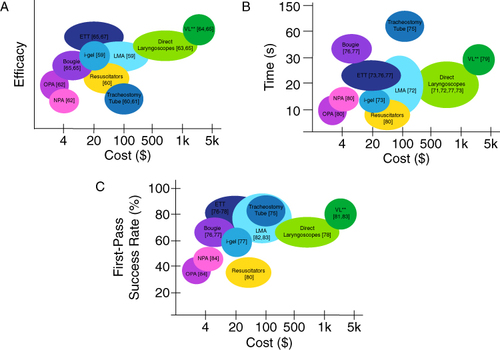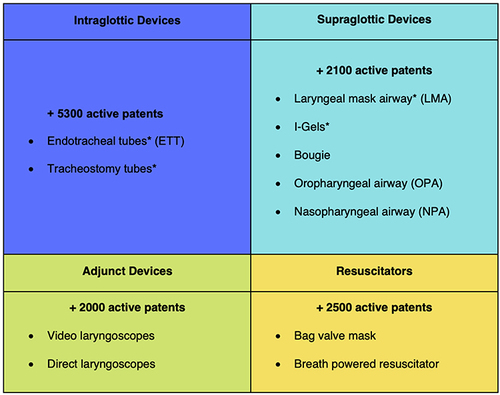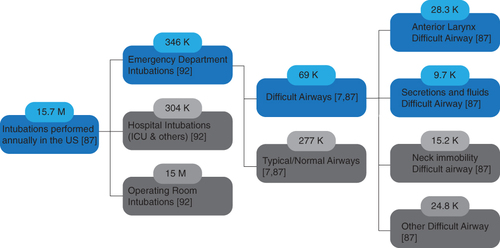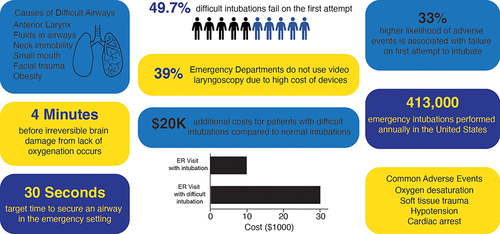Figures & data
Table 1 Comparison of Existing Airway Management Solutions
Figure 1 (A) Market landscape analysis comparing cost and efficacy of current solutions. Qualitative efficacy was determined from a combination of reported physician importance, intubation success rates for no more than three attempts, and efficacy reports from peer-reviewed journals. Costs were determined using medical device purchasing platforms and clinical reports. Data from these studies.Citation50,Citation52,Citation61–67 (B) Market landscape analysis comparing first-attempt success rate and cost. Note that the data used to populate first-pass success rate has studies pertaining to typical airway management as the upper bounds, and difficult airways as the lower bounds, when applicable. Data from these studies.Citation68–76 (C) Market landscape analysis comparing time for intubation and cost. Note that times may overlap for adjunct devices and respective devices whose insertion they assist. **Indicates device with learning curve in medical trainees as indicated by literature. Data from these studies.Citation71–74,Citation76–79,Citation80

Figure 2 Airway management device patents. Only the devices indicated with an asterisk can maintain the airway independently and are thus referred to as direct devices in this report. The remainder of the devices are either adjuncts, meaning they are assistive devices for insertion, or they are unable to both maintain patency and allow for oxygenation and are used in the pre-hospital setting or before intubation. To probe the number of devices manufactured in each category, the number of active patents was ascertained. Note that the number of patents will be much greater than the number of FDA-approved devices on the market, but this information is less readily available. Data from Home. Anesthesia Airway Management (AAM). https://aam.ucsf.edu/.Citation86

Figure 3 Patient segmentation for airway management. Although difficult airway attributions can be further segmented, unless current technologies fail to meet the needs of a subsection of the population, over-limiting the target population will negatively impact investor opportunity. Target segments of the population are shown in blue. Data from these studies.Citation7,Citation87,Citation89

Table 2 Rational for Innovative Focus, Weighing the Pros and Cons of Key Categories of Decision-Makers to Determine the Product’s Commercial Viability to Validate the Selected Target Market. The Graphic Contains Synthesis from This Market Report, Knowledge Obtained from Previous User Interviews and Zenios et alCitation94

